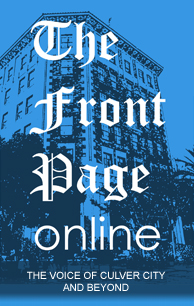The turning point — from promising to memorable — for yesterday’s four-star tribute to Dr. Martin Luther King at the Senior Center came 30 minutes in. The documentary producer Orlando Bagwell pushed up the sleeves of his casual gray sweater and announced to the second consecutive capacity crowd of 300, “Now let me tell you who I really am.”
Once the normally low-key, middle-aged Mr. Bagwell gently, but quite firmly, seized the wheel of the all-afternoon program, Dr. King could have been pardoned for sitting up in his grave and smiling.
He fled gracefully, swiftly from three straight bone-dry, copy-kat biographies of him that were archly read by three politicians who made presentations but did not know Mr. Bagwell from Albert Vera.
Magically and seamlessly, the small but meaningful gesture ignited an instant, intimate dialogue with a massively aroused, fully connected audience that had no intention of sitting by as cardboard observers.
They gave and they took, robustly, because Mr. Bagwell emerged as the King maven he was advertised to be.
Two Dimensions
[img]60|left|Dr. Martin Luther King||no_popup[/img]Although he presented as shy in the beginning, and insisted he was more comfortable away from crowds, alone in a darkroom, his performance belied those words.
For a man who stressed the necessity of speaking from the heart, he led by example. He only consulted notes when quoting the words of others.
Perhaps his most important message was that allowing the sparkling waters of Dr. King’s life to wash over one’s being was not intended to be a singular experience “but is to be shared with others.”
In other words, learn and pass it on.
What He Is and Isn’t
The impressive combination of the authenticity of the life Mr. Bagwell has lived, from the ground up, from segregated Baltimore to Los Angeles, and his mastery of his complex subject, immediately engaged the bold, knowledgeable crowd.
He was not an historian, he said, “but a filmmaker who studies history and then tries to find ways to present narratives.” The “great nexus,” he said, “is between filmmaker and a chronicler of the time.”
He did not want to display Dr. King as larger than life, but rather, real, to show that emulation of him is attainable.. “Dr. King would acknowledge that he did not necessarily face every situation with indomitable courage,” Mr. Bagwell said.
Reaching a Conclusion
After inspecting the chief virtues that inspired Dr. King, he concluded that faith was the central value of his life, “not just in his God but in humanity.”
“Once I settled on the idea of faith,” Mr. Bagwell said, “I began to construct a story along that line.”
Today, years later, the body of his much-decorated work represents perhaps an unparalleled attempt to keep alive Dr. King’s multi-tiered dream of a colorblind society with justice for everyone.
A Job for Everyone
Each American bears a responsibility toward Dr. King’s legacy, the producer said.
“The challenge for us,” he said, “is to work through these materials and experiences, and then ask, ‘What does all of this mean to us?’
It was as if the audience, largely black, had hunched closer and implored him to “Tell us a story.”
One more time, the most terrifying and awe-inspiring scenes of the sometimes-romanticized civil rights movement breathed audibly.
One scene:
Hundreds of marchers fleeing for their lives from horse-riding, club-wielding, teargas-spewing cops, snarling unrepeatable words.
Another scene:
A diminutive young black man, with remarkable respect and restraint, confronting a villainous deputy sheriff who took drooling pleasure from calling theyoung man dirty names.
Can you sit still watching ugly scenes ripped from real life?
At the outset, Mr. Bagwell warned his listeners that events occurring before anyone in the audience was born would seem remote, placing the burden of responsibility older members of a generation to be certain their children are roundly educated.
On a large screen, the civil rights fires of 40 and 50 years ago burned brightly as Mr. Bagwell flashed back to the images of the day in the words of the main players, the torturing Southern troopers and politicians who scarcely pretended to have consciences.
The searing imagery of horseback-riding cops, their faces screwed into hateful contortions, wielding frightening clubs against helpless young blacks galloped across the full and hushed room.
Creating a Bloodied Landscape
Mr. Bagwell, the shining centerpiece of this day, employed clips from one of his award-winning films, “Eyes on the Prize,” to visually construct the context of the tenor of very different times.
The stilled room became timeless.
He walked the audience through a gallery of the most stomach-turning moments of the civil rights movement, indistinctive from Dr. King’s life.
Masterfully, Mr. Bagwell weaved the strands of lessons from his own underdog, but strongly motivated parents around the better and lesser known framework areas of Dr. King’s experience.
Having studied Dr. King, from the inside and from the outside, throughout his adult life, Mr. Bagwell roved from one scenario to the next, dropping coins of knowledge and insight as he proceeded.
Isn’t Anybody Shy?
He came to Culver City to teach, and to engage interactively.
The eager audience came to learn — and to teach a little themselves.
Nary a bashful person spoke from the crowd. Only Type-A personalities, it seemed, were in the room. Dwelling on significant personal experiences — living next door to the widow of the martyred Medgar Evers in Claremont, trying to motivate reluctant fellow blacks in Ohio — members of the audience gave nearly as good as they got.
For those who just observed, it was a riveting, even mesmerizing, tableau.
In Closing
At the end, a beaming Mary Ann Green, chair of the Planning Committee, was asked how she had landed a guest of Mr. Bagwell’s unique caliber. “Mutual friends,” she said, coyly. Beyond that, “I can’t tell you my secrets.”
Vice Chair Bill Wynn was standing in the rear of the large room, beaming, too. “This is just the beginning,” he promised.
